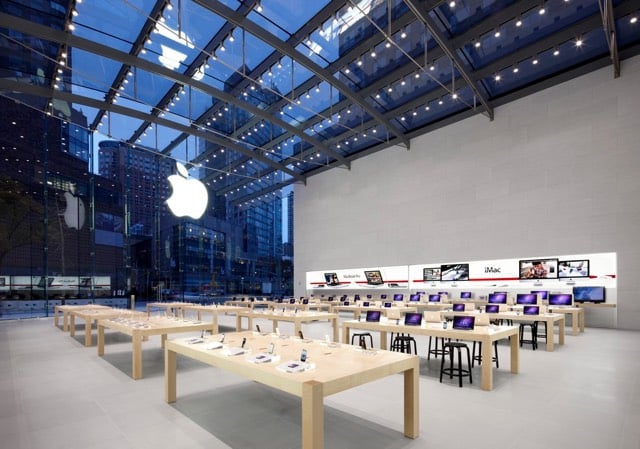The retail churches of the cult of Apple

Sarah Laskow of Atlas Obscura took cultural historian Erica Robles-Anderson to the Soho Apple store. Robles-Anderson recently studied the use of technology in churches and Laskow wanted to know: are Apple stores the new temples?
“People have used technology for a long time to speak to the gods,” she says — to create collective experiences of the sublime.
These days, technology is more often talked about as a way to create personalized, individual experiences, but Robles-Anderson thinks that’s only part of the story. Communal ritual is always a part of technology: Early computers came into group spaces, like families and offices. (Mad Men understood this dynamic: the computer as an event weathered together.) Powerpoint presentations gather people to look at giant screens. Even using an iPhone to tune out the human beings around you requires being part of a larger group.
And Apple, more than any other technology company, has been able to access both these experiences, the individual and the collective. “They feel iconic, like an emblem of the personal,” says Robles-Anderson. “And yet it’s a cult. Right? It’s so obviously a cult.”
The architecture of the stores contributes to the sacred feeling of cult membership.
“The oversized doors are fantastic,” says Robles-Anderson. “There’s no reason for them.” They’re there only to communicate that this place is important. Also, they’re heavy, like church doors, to give purpose and portent to the entry into the space.
We walk inside. It’s light and bright, and immediately in front of us, a wide staircase of opaque glass sweeps up to the second floor.
This is an old, old trick. “It’s used in ziggurats, even,” Robles-Anderson says. “It creates a space that emphasizes your smallness when you walk in. You look at something far away, and that makes your body feel like you’re entering somewhere sacred or holy.”





Stay Connected